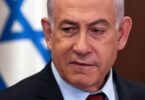Dr. Mohammed Al-Sulami
Iranian President Ebrahim Raisi visited three Latin American countries in mid-June. This trip was an opportunity to visit three revolutionary countries that are under US sanctions, namely Venezuela, Nicaragua and Cuba. These countries are also ideologically close to the revolutionary Iranian state, as they oppose the US-led international order and Washington’s foreign policies.
One of the trip’s objectives was to publish diplomatic statements outlining Iran’s convergence with the revolutionary Latin American countries against US pressures and policies and to present a common agenda. Raisi explained that Latin America is no longer “the backyard of the Americans” because of the search for independence of each of the Latin American countries. Despite the ideological convergence between Iran and the revolutionary Latin American countries, they do not complement one another from an economic standpoint. For example, even though Iran and Venezuela proclaimed during Raisi’s visit that they aimed to reach a trade volume of $10 billion and eventually $20 billion, official trade reached only $3 billion in 2022. Also, Iran’s relationship with Nicaragua is now focused more on developing military cooperation in order to counter US influence in Latin America, rather than on economic matters, and Cuba has been a historical partner of Iran since the 1979 Iranian revolution.
Overall, it can be said that the Iranian strategy in Latin America is based on exporting and reinforcing the revolutionary ideals that are specific to the populist ideology of the founder of the Islamic Republic, Ayatollah Khomeini. Raisi tapped into the populist orientation of the revolutionary Latin American states. All three of these countries embrace anti-US sentiments and these feelings are predominant in their societies. Paradoxically, even if anti-US feelings are predominant in some segments of the Latin American population, it is clear that, in Iran, the majority of public opinion was indifferent to the conservative Iranian president’s diplomatic tour.
By addressing the peoples of Latin America, who are, according to Iran, subjected to “US arrogance,” Raisi sought to restore his revolutionary image on the international scene, but this diplomatic rhetoric is no longer appealing within Iran. Indeed, Raisi’s search for revolutionary legitimacy is part of ongoing efforts to restore the credibility and support base of the Iranian leadership, both of which diminished greatly following the September 2022 death of Mahsa Amini and the ensuing national protests. In addition, Iran’s long-lasting and continuous economic woes have compounded the legitimacy crisis facing the country’s leadership, with it struggling to craft effective policies and solutions to remedy the economic crisis. The tough sanctions regime on Iran has not helped the leadership in reviving the fortunes of the economy.
While the economic situation is very difficult inside Iran, this trip to Latin America allowed Raisi to strengthen the anti-US consensus inside the Iranian establishment. This remains one of the ideological tenets of the Khomeinist state and perhaps one of the tenets that continues to gel the establishment together. Because of the lack of popular interest in his Latin America trip, Raisi asked the Iranian media to provide more coverage of his foreign diplomatic visits. This request was apparent during his meeting with Islamic Republic of Iran Broadcasting on Aug. 7. Indeed, the majority of Iranian public opinion is not interested in the Iranian state’s diplomatic activism in distant parts of the world, such as Latin America. The Iranian people want the economic problems of the country to be taken seriously and for governance to improve, not for the president to spend vast sums on long diplomatic visits for the sake of improving the standing of the Iranian state and the implementation of its ideological projects and schemes.
Besides the Iranian internal political context, Raisi’s trip was also part of the ongoing showdown between Iran and the US over the Iranian nuclear issue. This distant trip allowed Raisi to maintain valuable diplomatic support to limit Iran’s international isolation and marginalization within international organizations. It also stemmed from Iran’s desire to appear as a world power at a time when Tehran is encountering difficulties on the regional scene. This Latin American escape also reflected an Iranian diplomatic illusion of having the capacity to influence geopolitical developments in the backyard of the US. Despite this grand Iranian illusion, the symbolic dimension of Raisi’s trip and his meetings should not be neglected because they reflected hostility and convergence against Washington’s foreign policies. However, at the same time, the economic reality of the cooperation between Iran and the revolutionary Latin American countries should not be overestimated, despite the signing of numerous memorandums of understanding.
Iran’s interest is in finding ways to circumvent the economic sanctions that are impacting the capacity of Iranian leaders to transform the country’s economy into a real emerging one. However, the economic significance of Raisi’s trip was somewhat diminished as he did not go to Brazil, the main economic power in the region, which hosted former President Mahmoud Ahmadinejad in 2009. President Raisi turned to Latin America because of the economic difficulties facing Iran and because of its deteriorating relations with neighboring countries, as shown by the tensions with Azerbaijan and the Taliban government. Geographical distance is certainly a limitation to deepening bilateral relations on the economic and strategic levels, but it constitutes an advantage in terms of improving the image and standing of the Islamic Republic. The ignorance in Iran’s understanding of Latin America and the anti-US ideological orientation in the region allow Raisi’s trip and others to happen, but they are not enough to produce economic complementarity and deep economic relations between Iran and the revolutionary Latin American countries.
Arab News







